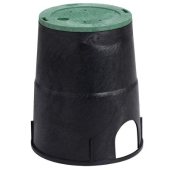
 2
2




Nissa Gadbois - RenaissanceMama
Events at Renaissance Farms
 2
2




Invasive plants are Earth's way of insisting we notice her medicines. Stephen Herrod Buhner
Everyone learns what works by learning what doesn't work. Stephen Herrod Buhner
 1
1




Nissa Gadbois - RenaissanceMama
Events at Renaissance Farms
 1
1





 3
3




It is a privilege to live, work and play in the traditional territory of the Salish People.
Now drop and give me 52... ~ Come Join the permies Shoecamp! ~ All about Permies, including Tutorials ---
Twenty bucks off the homesteading bundle for the next 72 hours!




Nails are sold by the pound, that makes sense.
Soluna Garden Farm -- Flower CSA -- plants, and cut flowers at our farm.
 2
2




A build too cool to miss:Mike's GreenhouseA great example:Joseph's Garden
All the soil info you'll ever need:
Redhawk's excellent soil-building series





 1
1




Iterations are fine, we don't have to be perfect
My 2nd Location:Florida HardinessZone:10 AHS:10 GDD:8500 Rainfall:2in/mth winter, 8in/mth summer, Soil:Sand pH8 Flat




Nissa Gadbois wrote:Any suggestions? I have a main hose and a T split - one going to our tenant's tiny house and the other currently to our hoop house. The run down the hill is... 150-200 ft? Needless to say, we turn it off and rain most of the winter which is a pain in the butt. Eventually, we'll have rainwater collection for the tiny house and the mobile home that will replace the hoop house on the site. All of that water comes from the main well that supplies the main house.
I'm in Massachusetts. And although the winters have been fairly mild the last couple of years, there's always freezing anyway.
So, what could work for insulation for overland hose. We don't want to dig it in for a lot of reasons.
Thanks heaps,




S Bengi wrote:The actual frost depth is about 30in in your area. But seeing as how digging isn't an option for you. You can just lay the pipe on the ground and throw some insulation on top. But how much insulation do you need? Maybe R-30 for the 30in of soil to the frost depth. So now that we have an idea of how much insulation you need. What could be use for insulation?
You could insulate with:
hay/straw (R-30 aka 15inch)
earth/compost (R-30 aka 30inch)
rockwool (R-30 aka 7inch)
foam/etc (R-30 aka 7inch)
I would probably double all of those numbers, just to be on the safe side.
You could get a recirculating pump to make sure that the entire lenght of pipe have the same temp and it isn't freezing in some section. Maybe even turn on a hearter once the temp of the pipe get down to a specific temp say 40F.
Nails are sold by the pound, that makes sense.
Soluna Garden Farm -- Flower CSA -- plants, and cut flowers at our farm.




Fish heads fish heads roly poly fish heads









Some places need to be wild

|
My cellmate was this tiny ad:
The new permaculture playing cards kickstarter is now live!
https://www.kickstarter.com/projects/paulwheaton/garden-cards
|







